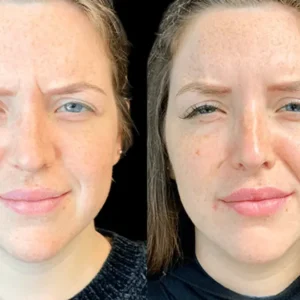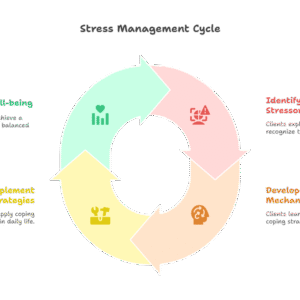
A radiant smile has become more than just a confidence booster in today’s image-conscious world. It serves as a gateway to professional success, social connections, and personal satisfaction. The quest for pearly whites has evolved dramatically from ancient practices of using abrasive materials to today’s sophisticated whitening technologies. Modern dental care offers an unprecedented array of options for achieving that coveted bright smile, each tailored to different lifestyles, budgets, and dental conditions.
The journey toward whiter teeth begins with understanding that tooth discoloration occurs through various mechanisms. Surface stains develop from daily consumption of coffee, tea, red wine, and tobacco products, while deeper intrinsic stains may result from medications, aging, or genetic factors. This complex nature of tooth discoloration requires equally nuanced approaches to treatment, making it essential to explore the full spectrum of available whitening solutions.
Revolutionary At-Home Whitening Systems That Actually Work
The landscape of at-home whitening has transformed dramatically with the introduction of professional-grade systems designed for home use. These advanced kits now feature custom-fitted trays, LED light activation, and pharmaceutical-grade whitening gels that rival in-office treatments. The convenience factor cannot be overstated, as busy professionals and parents can now achieve significant whitening results while maintaining their demanding schedules.
Professional at-home systems typically utilize carbamide peroxide or hydrogen peroxide in carefully calibrated concentrations. The slow-release nature of carbamide peroxide makes it ideal for overnight treatments, while hydrogen peroxide offers faster results for those seeking quicker transformations. Many of these systems now incorporate desensitizing agents to minimize tooth sensitivity, a common concern that previously deterred many individuals from pursuing whitening treatments.
The effectiveness of these systems has been validated through extensive clinical research, with many studies showing results comparable to professional office treatments when used consistently over the recommended treatment period. The key lies in proper application technique and adherence to the prescribed treatment schedule, factors that significantly influence the final outcome.
Office-Based Whitening Procedures That Deliver Instant Gratification
Professional in-office whitening procedures represent the pinnacle of teeth brightening technology, offering dramatic results in a single session. These treatments utilize high-concentration whitening agents activated by specialized light sources, heat, or laser technology to break down stains at the molecular level. The controlled environment allows dental professionals to achieve whitening levels that would be impossible with over-the-counter products.
The typical in-office procedure involves careful isolation of the gums and soft tissues, followed by the application of professional-strength whitening gel. Advanced light-activation systems enhance the whitening process, often achieving results that are six to eight shades lighter in just one hour. The immediate gratification factor makes these treatments particularly appealing for individuals preparing for special events or those who prefer professional supervision throughout the whitening process.
Recent innovations in office-based whitening include the development of customized treatment protocols based on individual tooth structure and staining patterns. Digital shade matching technology allows practitioners to precisely monitor progress and adjust treatment parameters in real-time, ensuring optimal results while minimizing the risk of over-whitening or sensitivity.
Natural Whitening Methods That Honor Traditional Wisdom
The resurgence of interest in natural whitening methods reflects a growing desire to embrace gentler, chemical-free approaches to dental care. Oil pulling, an ancient Ayurvedic practice involving swishing coconut or sesame oil in the mouth, has gained scientific validation for its ability to reduce plaque and surface stains while promoting overall oral health. This method works through the mechanical action of oil movement and the antimicrobial properties of certain oils.
Activated charcoal has emerged as another popular natural whitening agent, though its effectiveness remains a subject of ongoing research. The porous structure of activated charcoal is believed to bind to stain-causing compounds, though dental professionals emphasize the importance of using food-grade charcoal and avoiding abrasive application techniques that could damage tooth enamel.
Enzymatic whitening through natural fruit enzymes, particularly from pineapple and papaya, offers a biochemical approach to stain removal. These enzymes break down protein-based stains without the harsh effects of chemical whiteners, making them suitable for individuals with sensitive teeth or those preferring organic approaches to dental care.

Dietary Strategies for Maintaining Long-Term Whiteness
The relationship between diet and tooth color extends far beyond simply avoiding staining substances. Strategic nutritional choices can actively support tooth whitening efforts while providing essential minerals for enamel health. Calcium-rich foods strengthen tooth structure, making teeth more resistant to staining, while vitamin C supports gum health and collagen production in oral tissues.
Incorporating whitening foods into daily meals creates a sustainable approach to maintaining bright teeth. Strawberries contain malic acid, a natural astringent that helps remove surface stains, while the fibrous texture of apples and celery provides mechanical cleaning action. Dental implant cost considerations often motivate individuals to invest more heavily in preventive care, including dietary modifications that preserve natural tooth structure and appearance.
Hydration plays a crucial role in maintaining tooth whiteness, as saliva production helps neutralize acids and wash away staining compounds. Green tea, despite its potential for staining, contains polyphenols that inhibit bacterial growth and may actually support oral health when consumed strategically. The timing of consumption matters significantly, with rinsing or brushing within thirty minutes of consuming staining substances helping to minimize their impact.
Innovative Whitening Technologies Reshaping Dental Aesthetics
The frontier of whitening technology continues to expand with groundbreaking innovations that promise more effective, comfortable, and long-lasting results. Nanotechnology applications in whitening involve microscopic particles that can penetrate deeper into tooth structure while releasing whitening agents gradually over extended periods. This approach minimizes sensitivity while maximizing whitening effectiveness.
Photodynamic whitening represents another leap forward, utilizing specific wavelengths of light to activate whitening compounds at the molecular level. This precision approach allows for targeted treatment of specific types of stains while preserving healthy tooth structure. The technology also enables real-time monitoring of the whitening process, preventing over-treatment and ensuring consistent results.
Biocompatible whitening systems incorporate naturally derived compounds that work synergistically with the body’s own healing mechanisms. These systems often combine whitening agents with remineralizing compounds that strengthen tooth enamel during the whitening process, addressing the common concern that whitening treatments may weaken tooth structure.
Personalized Whitening Protocols for Individual Success
The most significant advancement in teeth whitening lies not in any single technology but in the development of personalized treatment protocols that account for individual variations in tooth structure, lifestyle, and aesthetic goals. Comprehensive assessment techniques now include digital imaging, enamel thickness measurements, and detailed analysis of staining patterns to create customized treatment plans.
Genetic factors influence how individuals respond to different whitening treatments, with some people achieving dramatic results from mild treatments while others require more intensive approaches. Professional assessment can identify these factors early in the treatment planning process, saving time and reducing the risk of disappointing results.
The integration of artificial intelligence in treatment planning allows for predictive modeling of whitening outcomes based on individual characteristics and historical treatment data. This technology enables practitioners to set realistic expectations and optimize treatment protocols for each patient’s unique situation.
Conclusion
The world of teeth whitening has evolved into a sophisticated field offering solutions for every preference, budget, and lifestyle. From cutting-edge professional treatments to time-honored natural methods, the options available today provide unprecedented opportunities to achieve and maintain a brilliant smile. The key to success lies in understanding that effective whitening is not a one-size-fits-all proposition but rather a personalized journey that considers individual needs, expectations, and oral health status.
As whitening technologies continue to advance, the emphasis shifts toward comprehensive approaches that combine multiple modalities for optimal results. Whether choosing professional in-office treatments for immediate results, at-home systems for convenience, or natural methods for gentle care, the foundation of successful whitening remains consistent good oral hygiene practices and realistic expectations.
The investment in a whiter smile extends beyond aesthetic benefits, contributing to increased confidence, improved social interactions, and enhanced professional opportunities. By exploring the full range of available options and working with dental professionals to develop personalized treatment plans, individuals can achieve the radiant smile they desire while maintaining optimal oral health for years to come.







